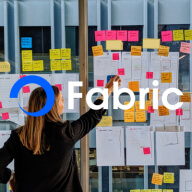An elevator pitch is a brief, persuasive short description that can be used to spark interest in what your product does, who is it for and communicate its benefits. This template will guide you on how to run a workshop activity to collaboratively come up with your elevator pitch for your project.
This workshop is designed to help collaboratively gather ideas and assumptions about a new product and build a common understanding in order to align multiple stakeholders on what the product is and who it's for.
Workshop participants may include a mix of business stakeholders, customer representatives, those in charge of selling the product and development team members.
Elevator Pitch FAQs
What does a good elevator pitch include?
There are a few things that a good elevator pitch should have: it must be short, take no more than 60 seconds to be read, easy to understand, have an interesting hook and convince the audience why they should use your product instead of the competitor. Remember, the elevator pitch should be enticing, and it’s the first time most people are hearing about your product, make a good first impression!
What are the 7 steps to making an elevator pitch?
The elevator pitch contains seven sections explaining your product or service briefly: who is it for, their needs, your product name, your product category, the key benefit, your direct competitors, and why you are better than them. After you come up with the answer to these sections, you can craft your elevator pitch and present it to stakeholders.
